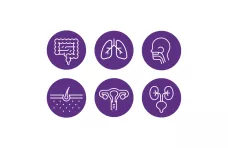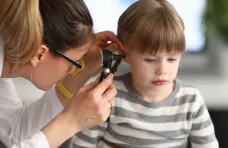Italy 2025: knowledge and behaviors about microbiota
The survey was conducted by Ipsos among 7,500 people in 11 countries (France, Portugal, Poland, Finland, Italy, Germany, United States, Mexico, Brazil China, and Vietnam).
Italians and microbiota: a curious and engaged public, still finding its bearings
Summarizing Italy's results in the survey
In 2025, Italians show strong familiarity with microbiota-related vocabulary—especially everyday terms like “flora” and probiotics—and a generally health-conscious lifestyle. While most positive habits are in place, awareness of less visible factors (like over-washing or targeted behaviors) remains limited. Healthcare professionals are widely trusted and starting to play a more active role, even though most people first learned about the topic through media. Interest in microbiota testing is growing, but still marked by uncertainty. Italy is clearly engaged.
1. Above-average microbiota awareness, led by everyday terms
In 2025, 78% of Italians have heard of the term “microbiota”, and 31% know exactly what it means, both above global averages (71% and 23%).

The gut the gut microbiota is the most recognized (65%, vs 57% overall), with 33% claiming to understand it exactly (vs 26% overall).
Other microbiotas, vaginal (53%), skin (45%), lung (43%), urinary (47%), oral (49%), and ENT (41%), are known by about half of respondents, reflecting moderate but broad awareness.

Learn all about microbiota
Learn moreThe concept of dysbiosis remains less familiar (34%, aligned with the global average), but terms like “gut flora” (99%) and “vaginal flora” (91%) are far more widely recognized in Italy than elsewhere.
Similarly, probiotics (95%) and prebiotics (77%) are well known, suggesting that Italians are not only familiar with the microbiota vocabulary but also aware of its possible modulation.

2. Balanced diets and good intentions, but some habits lag behind
In 2025, 53% of Italians report having changed their habits to support a balanced microbiota, a figure close to the global average (56% overall). Most adopt favorable behaviors:
However, only 69% engage in regular physical activity, notably below the global average of 77%.

Microbiota & sport: competitive micro-organisms
Find out more...Supplement use is average: 50% consume probiotics (vs 49% overall) and 40% prebiotics (vs 41% overall), closely aligned with global levels.
Yet one widespread habit stands out: 80% of Italians shower more than twice a day, a practice potentially harmful to the skin microbiota, far above the global average of 47%.
These results suggest a population attentive to nutrition, but still needing better awareness of less obvious daily habits that impact microbiota health.

3. Trusted healthcare professionals, gradual but visible involvement
In 2025, only 17% of Italians first heard about the microbiota in a healthcare context, with most citing media sources (49% way above the 36% globally), medical content (23%), or television (23%).
Yet 81% consider healthcare professionals the most trustworthy source on the subject, aligning with global sentiment (78% globally).

Actual involvement from professionals is mixed: 41% have been informed about the microbiota's role, the same share about the importance of preserving it, and 46% of the Italians surveyed received advice on healthy behaviors, all figures slightly below or close to global averages.
However, 54% have already been prescribed probiotics or prebiotics, outperforming the global benchmark of 49%.
Italy also stands out for the type of professionals providing this information: 61% mention family doctors or pediatricians, and 23% pharmacists, a distribution unique compared to other countries.

Antibiotics: what impact on the microbiota and on our health?
Learn moreItalians are also better informed than average about the microbiota-related risks of antibiotics, with 46% receiving warnings, 48% getting advice to reduce impact, and 55% being told about digestive side effects.
A sign that while initial exposure comes mainly from media, healthcare providers are gradually stepping into their educational role.

4. Italians are curious about testing, but uncertainty remains
In 2025, 78% of Italians have never heard of microbiota testing, a figure slightly above the global average (73%). While 59% say they would be interested in getting tested (vs 61% globally), a significant 31% remain undecided, indicating that public opinion is still forming on the topic.
Interest focuses heavily on the gut microbiota (82%), with far less attention given to other microbiotas—the urinary microbiota comes next at 40%. When asked why they would take a test, Italians cite various motivations fairly evenly (with no single reason clearly standing out):
believe this test would be useful to conduct a health check-up
(vs 60% overall)
view it as a way to prevent and/or slow down the onset of pathologies
(vs 51% overall)
see it as a tool to understand the impact of lifestyle factors
(vs 49% overall)
Encouragingly, 61% would be willing to donate stool samples anonymously for research, and only 15% are opposed, making Italians slightly more open to contributing to science than the global average. Overall, the topic of microbiota testing is still new in Italy, met with a mix of interest and hesitation.
What is microbiota testing and mapping?
There are different types of microbiota testing, not only for the gut. Overall, they seek to identify microorganisms, such as bacteria and fungi, living in a specific part of the body to help inform health decisions and/or outcomes.
Intestinal microbiota testing, which seems to be the most common type of analysis, generally tests a person’s stool sample. For example, they could look for illness markers or extract DNA.
Both collective and individual gut microbiota analyses start with a stool sample. Microbiota mapping aggregates results from multiple microbiota tests to advance research and fight chronic diseases. Individual tests provide personal data on gut flora, with no definition of a clinically validated “healthy” or “pathological” microbiota. Thus, mapping fuels population-level knowledge, while testing gives a snapshot of one’s own microbiota.

Gut microbiota: still many things to be discovered
Find out more...
Methodology
This third edition of the International Microbiota Observatory was conducted by Ipsos on 7,500 individuals across 11 countries (France, Portugal, Poland, Finland, Italy, Germany, the USA, Brazil, Mexico, China, and Vietnam). Two new countries were included in this edition: Italy and Germany.
The survey was conducted over the Internet between January 21 and February 28, 2025. For each country, the sample is representative of the population aged 18 and over in terms of :
- gender
- age
- profession
- region
Representativeness was ensured via quota sampling, the most commonly used sampling method for obtaining a representative sample of the population studied. The quota variables for each country were gender, age, region, and socio-professional category. The data were adjusted:
- within each country, again to ensure that each population is representative
- globally, so that each country has the same weight. Statistical analyses were carried out using Cosi software (M.L.I., France, 1994), with a significance level of 95%
The survey population was 48% male and 52% female. The average age was 43.7 years. The sample of 7,500 individuals made it possible to carry out a detailed analysis by age group:
- 18-24
- 25-34
- 35-44
- 45-59
- 60 and over
Changes from one year to the next have been measured on a like-for-like basis, i.e. calculated taking into account only those countries present in both the first and second editions of the survey. While we do have results for the new countries included in this third edition (Germany and Italy), they have not been taken into account when calculating trends, since they were not included in the first two editions of the survey.
The questionnaire includes 16 questions on:
- socio-demographic data
- the level of knowledge about microbiomes
- the level of and desire for information from healthcare professionals
- the identification and adoption of behaviors designed to combat microbiome imbalances
- the level of knowledge, information, and behaviors of women about the vulvo-vaginal microbiome
- health data
The questionnaire lasted ten minutes and the 7,500 individuals had to complete the entire questionnaire in order to be included in the survey. The terms used in the questionnaire to talk about the microbiome have been translated and adapted to the terms used in each country.



